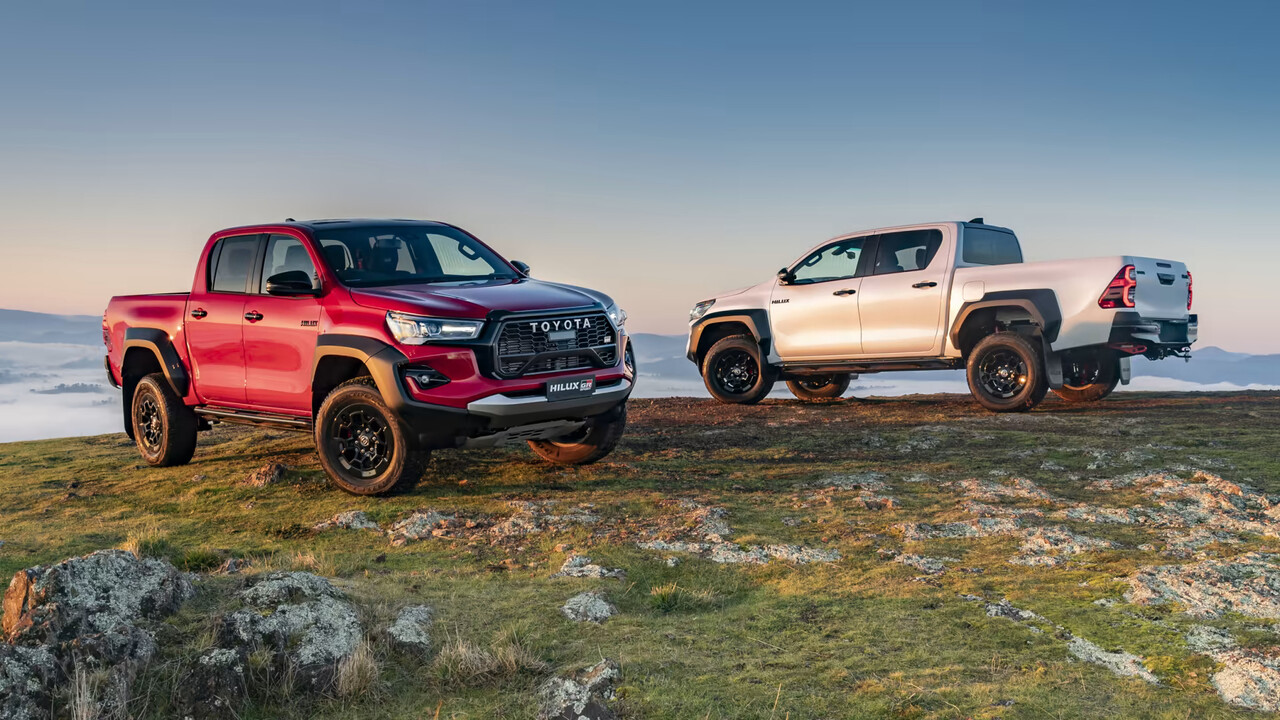
DubiCars Car Spotlight — Toyota Hilux History, Generations, Models & More: A Tough-As-Nails Pickup
When it comes to pickup trucks, few names resonate as strongly as the Toyota Hilux. With a history spanning over five decades, the Hilux has become synonymous with durability, reliability, and off-road prowess. The Hilux name was derived by combining the words High & Luxury. The pickup was also sold as the Toyota Pickup in the North American Market.

The first four generations of the Toyota Hilux were small, low-riding pickup trucks. With the arrival of the fifth generation, the Hilux became beefier and taller while also receiving a V6 engine option. In this edition of the DubiCars Car Spotlight, we take a look at the history, generations, models, and more of the Toyota Hilux.
First Generation | 1968 - 1972
The story of the Toyota Hilux began in 1968 when Toyota introduced the first-generation model. Initially a compact pickup, it was designed to cater to the growing demand for versatile, dependable workhorses. With a reliable engine and a rugged chassis, it quickly gained popularity among farmers, tradespeople, and outdoor enthusiasts.

It carried proper old-school looks with quad circular headlamps up front and a large grille, quite typical of JDM cars at the time. However, this one was not performance-oriented. It was powered by inline-4 engines ranging from 1.5-litres to 2.0-litres in size. The Toyota Hilux was assembled at the Hino production facility in Tokyo, Japan.
Second Generation | 1972 - 1978
The second-generation Hilux arrived with a more powerful 2.0-liter engine and a more spacious cabin. It was during this generation that the Hilux started making waves in international markets. Its reputation for durability was further solidified when it became a favorite choice for challenging off-road expeditions.

The second generation also came with a massive redesign, offering premium styling to buyers while still retaining the quad headlamp design. A new redesign in 1975 led to an increase in the dimensions of the pickup truck. For the first time, an automatic transmission was on offer.
Third Generation | 1978 - 1983
The third-generation Hilux saw a significant overhaul in design and performance. It featured a sleeker, more modern look, and Toyota offered a variety of body styles and engine options to cater to a broader range of customers. This generation was instrumental in establishing the Hilux as a versatile and dependable workhorse. Some of them are still used as a workhorse in some parts of the world.

It was powered by a range of inline-4 engines sized between 1.6 to 2.4 litres. For the first time, Toyota debuted a diesel engine on the Hilux. It was a 2.2-litre inline-4 unit that was known for its torquey performance at the time. Transmission options included a 4-speed manual, a 5-speed manual, and a 3-speed automatic.
Fourth Generation | 1983 - 1997
The fourth-generation Hilux continued to evolve with improved comfort and drivability. It introduced four-wheel drive as a standard option, making it even more capable off-road. This generation further strengthened the Hilux’s reputation for being nearly indestructible, often surviving extreme conditions and challenges.

Owing to the diesel engine being widely accepted, more diesel engine options were added to the lineup, while the petrol engine lineup received a boost with the addition of a 3.0-litre V6. Transmission options were updated as well with the addition of a new 4-speed automatic.
Fifth Generation | 1988 - 1997
Sixth Generation | 1997 - 2005
Seventh Generation | 2004 - 2015
Eighth Generation | 2015 - Present
Most Popular Toyota Hilux Generations In The UAE
Read the complete Toyota Hilux Car Spotlight article.
Also Read:
- Geneva International Motor Show Qatar — Schedule, Launches & More Details
- Toyota Hilux Vs Mitsubishi L200 — Battle Of The Japanese Pickups
- Electric Car Vs Petrol-Powered Car Ownership Costs — This Will Surprise You